The papal figure appears fragile, almost lost in the expansive folds of his cassock, captured in a moment of possible change. His hand is tightly clenching a rooster, the Biblical symbol of betrayal. The work is imbued with a muted air of profound uncertainty, but also of spiritual energy.
The sculptor Woytek likes to express himself metaphorically, in his figurations we encounter his individual mythology – a specific intertwining of Christian themes, mythological motifs and metaphorical references. And so as well in his current work his theme takes an idiosyncratic turn, as he contemplates, and thinks in a new way about, Peter’s betrayal of Christ as portrayed in the Gospel of Mark. In doing so he shifts the time frame, bringing a compelling variant into play: the rooster that indicates the betrayal of Christ is dead, and the future Pope becomes aware of his responsibility in all of its aspects.
The elongated body of this filigreed figure turns heavenward with vibrant elasticity. His expressive countenance mirrors his conflict and a consciousness of his own human weakness. His open hand is stretching out, seeking direction. Characteristic here is the subtle modeling of the surfaces, with their deliberate flaws, which – like the traces of a lived life – make the skin of this figure porous. The artistic principle that Woytek elevates here is not flawlessness, but rather imperfection. The aspect of vulnerability, and therefore of transience, resonates subliminally.
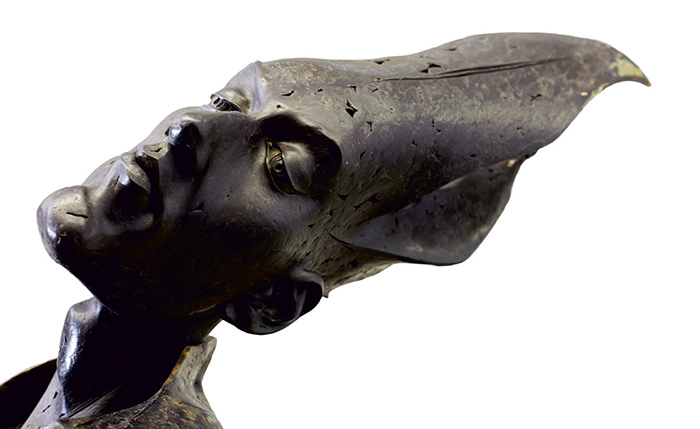
Emotion and Metaphor – Woytek: Habemus Papam. The cock is dead (Photo: Wolfgang Starker) © Woytek #artandemotion
Similar to the classical robed figure, this figure is inscribed in a recapitulative outer contour, the seismographically attenuated course of which unfolds as one circles the sculpture. For all of its outwardly directed dynamism, this closed figure with its inward-directed gaze is, however, characterized above all by an internal dynamic engagement. The covert dominant forces are indicated in the light and dark contrasts of the robe, the folds of which take on a life of their own – and into the volume of which the body threatens to disappear, and which at the same time appear to hold the figure upright. The internal dynamic approaches a turning point: spiritual turmoil becomes visible, coming into view with even greater forcefulness in the characteristic style and polychromy of the various drawings on the theme.
That this figure finds itself in a situation of radical change becomes apparent in the lithe, unstable stride motif, with one earthbound support leg and one free leg loosely in motion: this balancing act threatens to kip over at any moment, resulting in a loss of external and internal equilibrium. And then it becomes clear: what we have before us is an insecure, perhaps even endangered existence, caught in a dramatic arc of earthly imprisonment and spiritual detachment, placed in a process of continuous becoming and transforming.
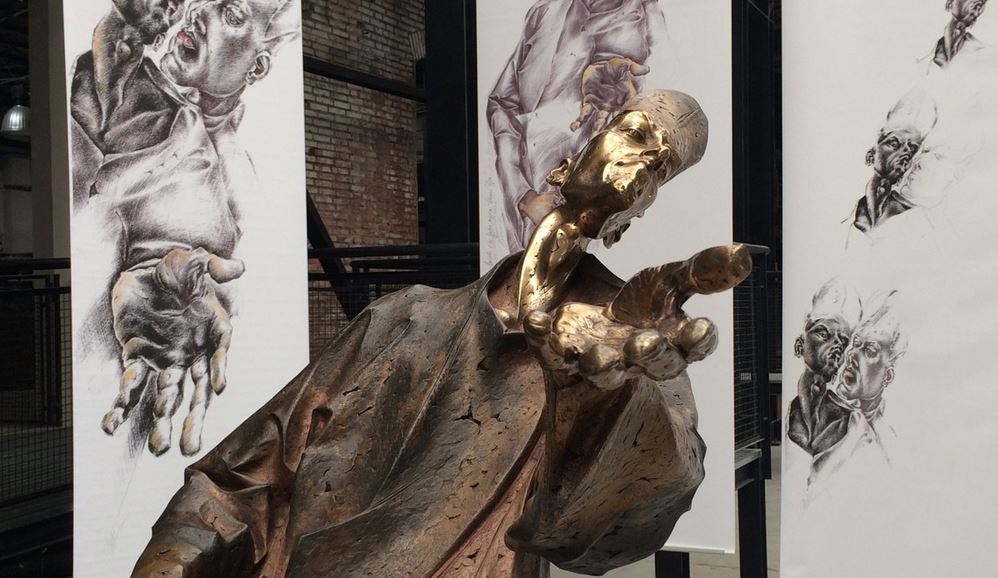
Verkörperte Metapher: Habemus Papam 2016 Sala Appia Rom © Woytek
But is this Pope to be viewed exclusively in a strictly theological context? In its challenging of traditional values and religious dogma isn’t this sculpture, in fact, pointing to the eternal, the universal – and therefore toward the unavoidable borderline situations of human existence? Isn’t the focus here on the individual, in all of his inner conflicts and subjective contradictions?
One thing is certain: Woytek’s sculpture – whether viewed alone or embedded in the sound space of a multisensory performance with music, speech and image – offers in its complexity a rich spectrum of theoretical ideas. Combining optical and tactical impressions, this figure affects the viewer in direct ways. It calls not only for our intellectual consideration, it also unexpectedly places itself in relation to our subjective corporeal memory, to our empathy.
Ambivalent situations, wavering between skeptical indecision and decisive action, vacillating between emotion and reason, present themselves in Woytek’s art as essential existential questions. With their spiritual attributes, his figures at the same moment also embody, even for a secular era, so much more: they are emotion become form, which – beyond any narrative – carries over to us, involves us. They are personified metaphors the intensity of which touches us.
© 2015 Dr. Marion Vogt / Translation: Edna McCown, New York
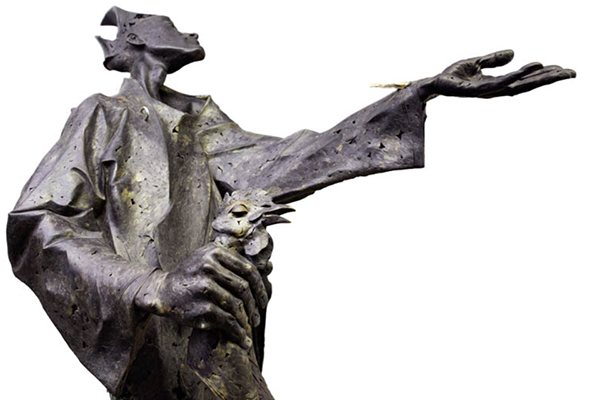
Embodied Metaphor. Woytek: Habemus Papam. The cock is dead. Original wax figure (Photo: Wolfgang Starker) © Woytek #artandemotion
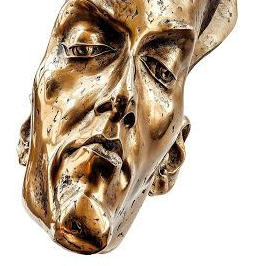
Emotion und Metapher: Habemus Papam. Il gallo è morto. Der Hahn ist tot © Woytek
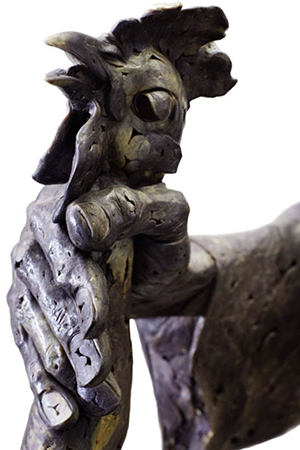
Habemus Papam. Der Hahn ist tot © Woytek (Foto: W. Starker)